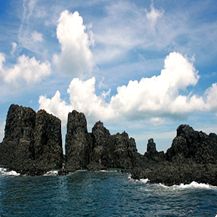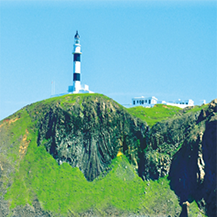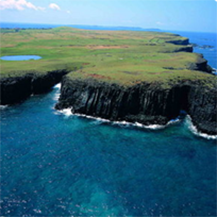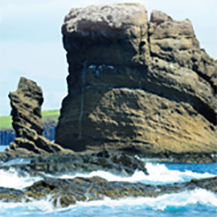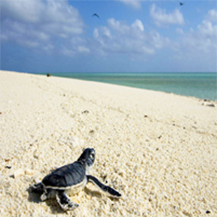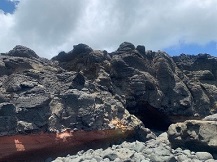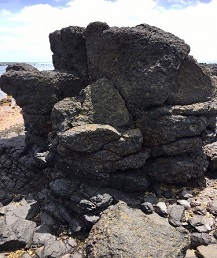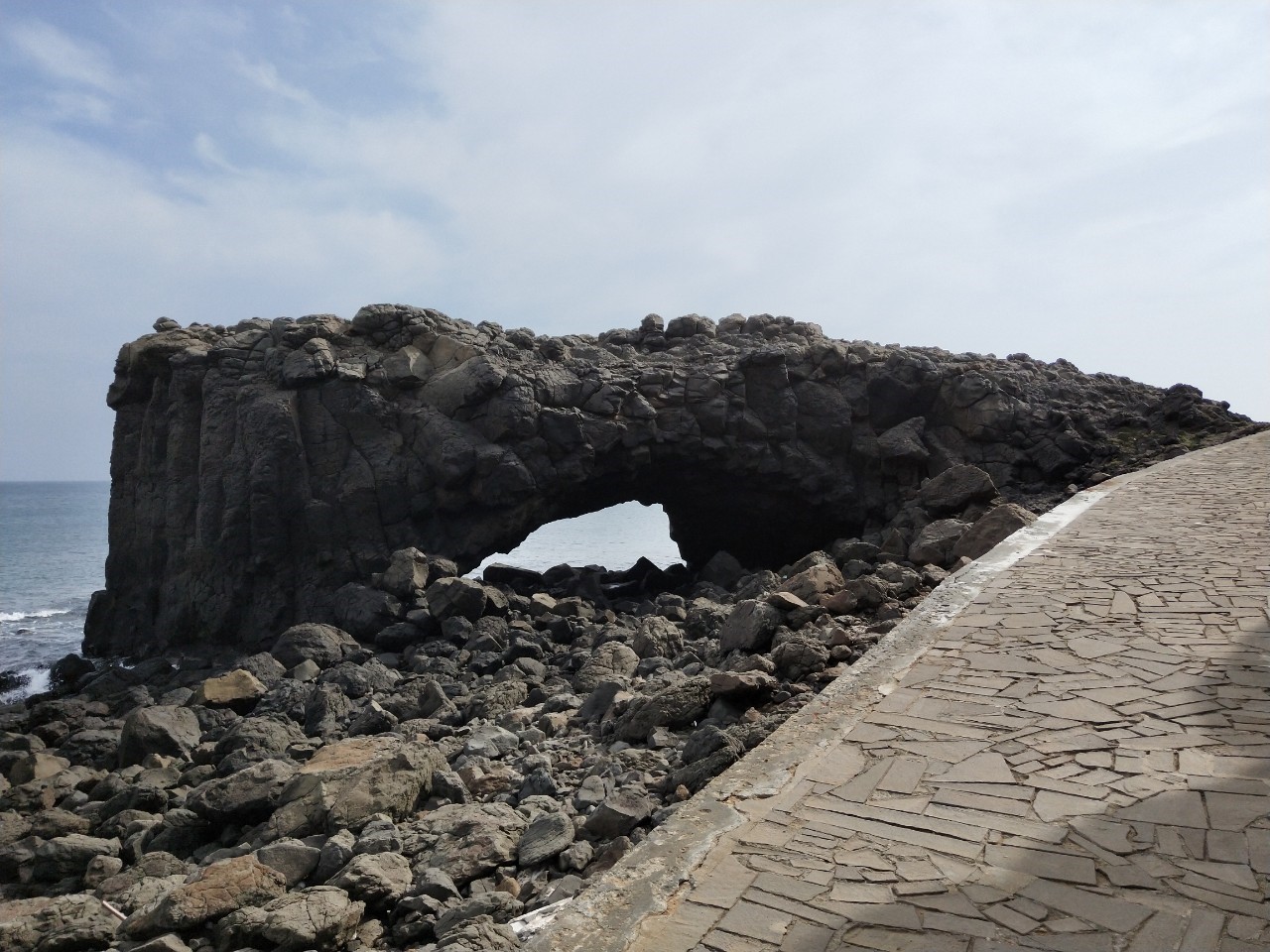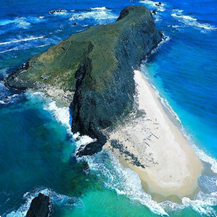
Baishayu is situated in the waters 4km off the north of the main island, the geological time is 13.2 million years, and it won its name due to the large patch of white sand beach (baisha means white sand) southwest of the this island. Its basalt columnar joints are well-developed. On the east side of the lava plateau is a basaltic dike which is 50m long, and a semi-circular crater-like terrain, with a bulging beach rock on the beach, part of the joints bearing chessboard-like chaps, very interesting to watch along with the pot holes scattered in between.


